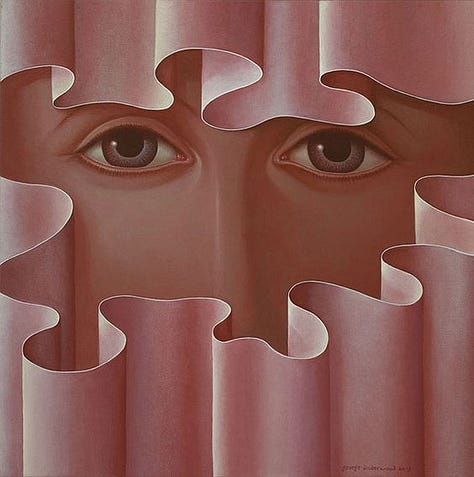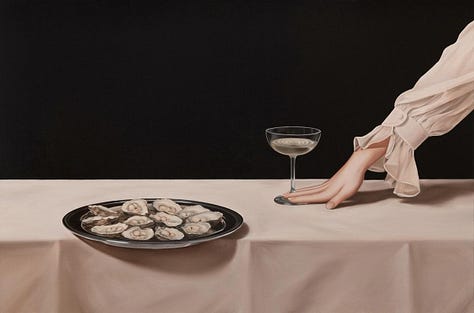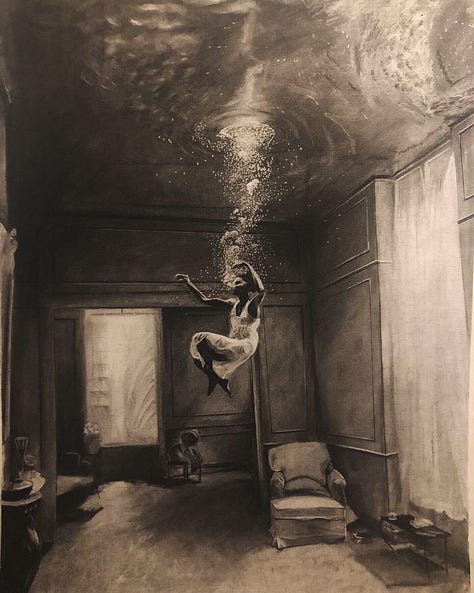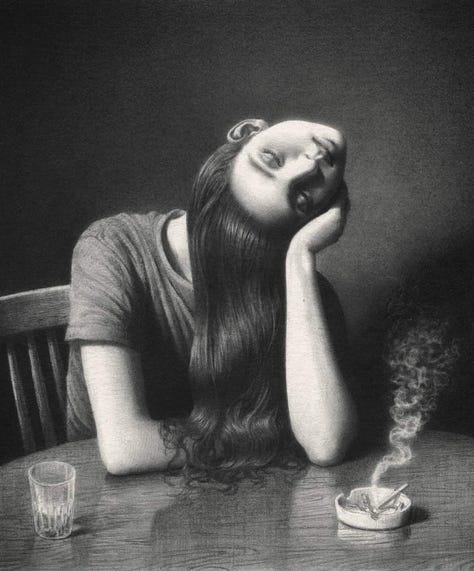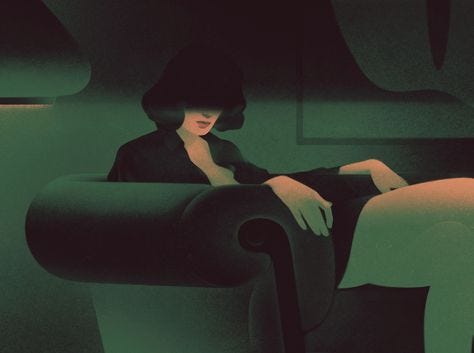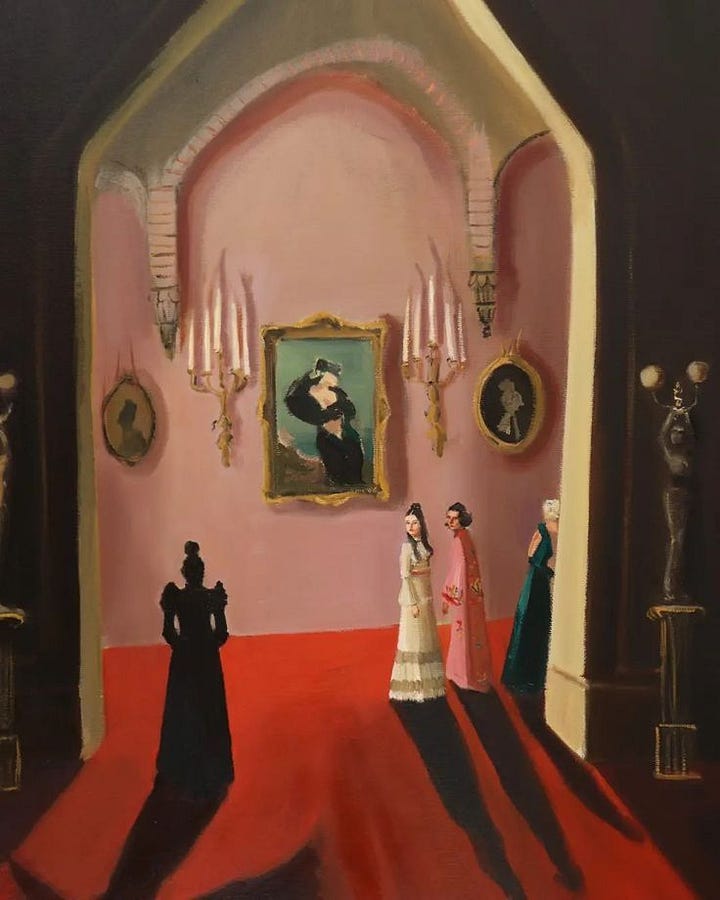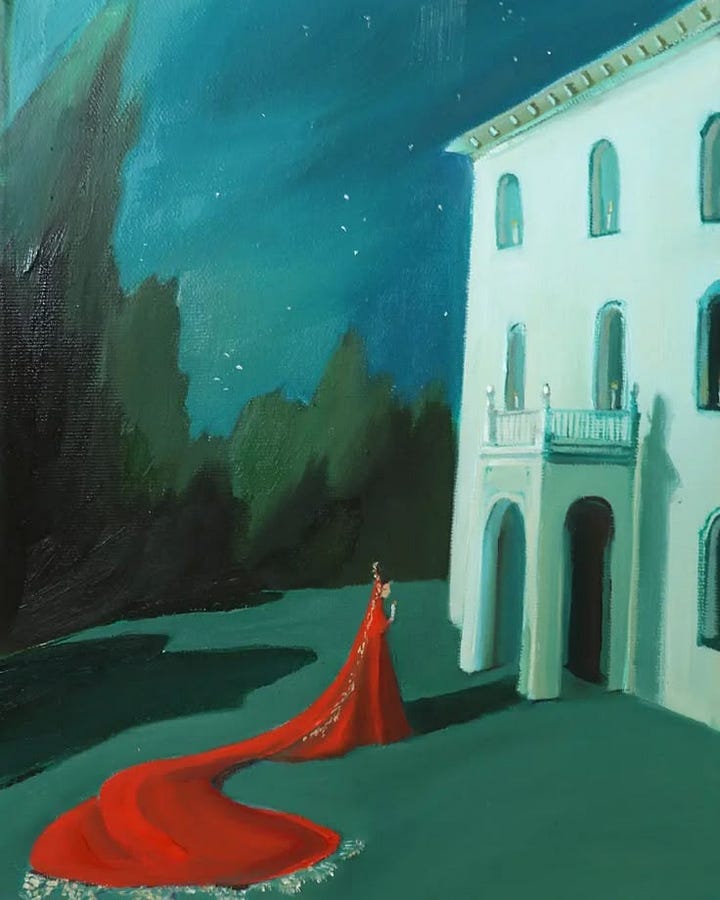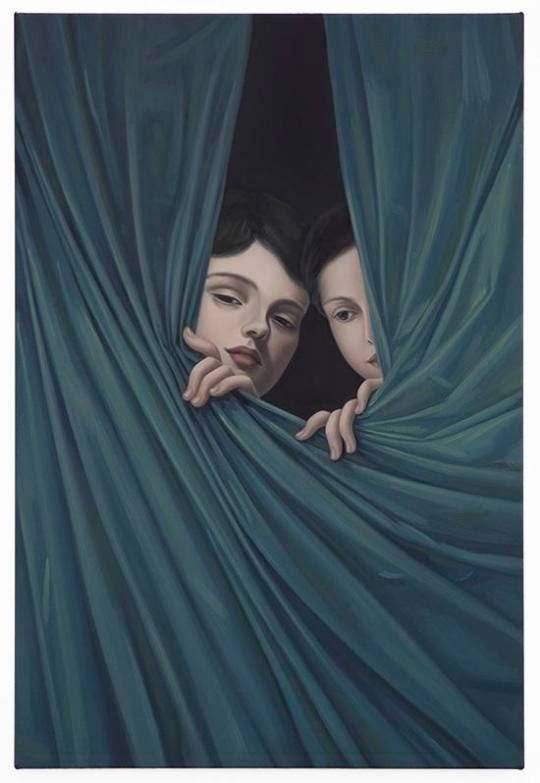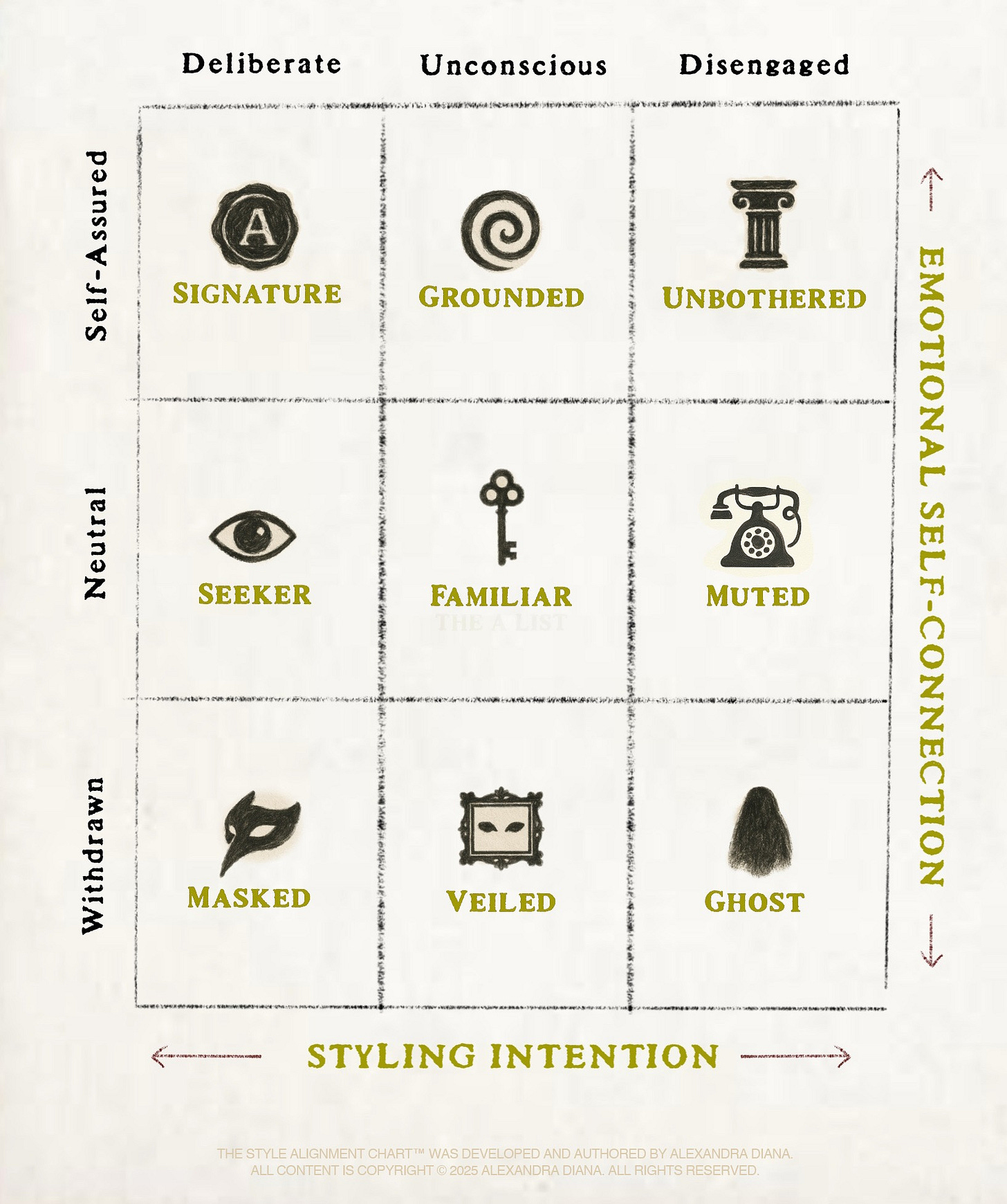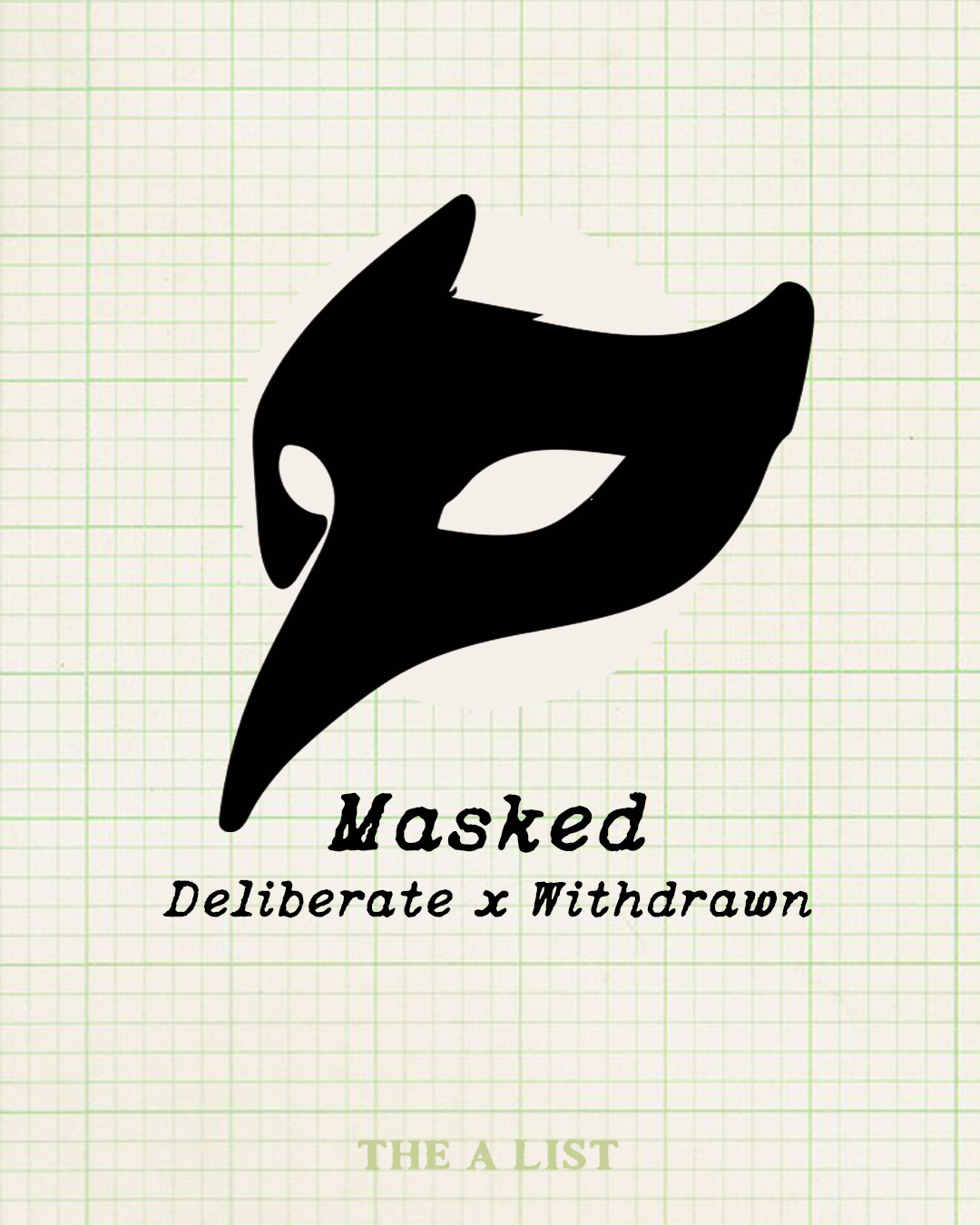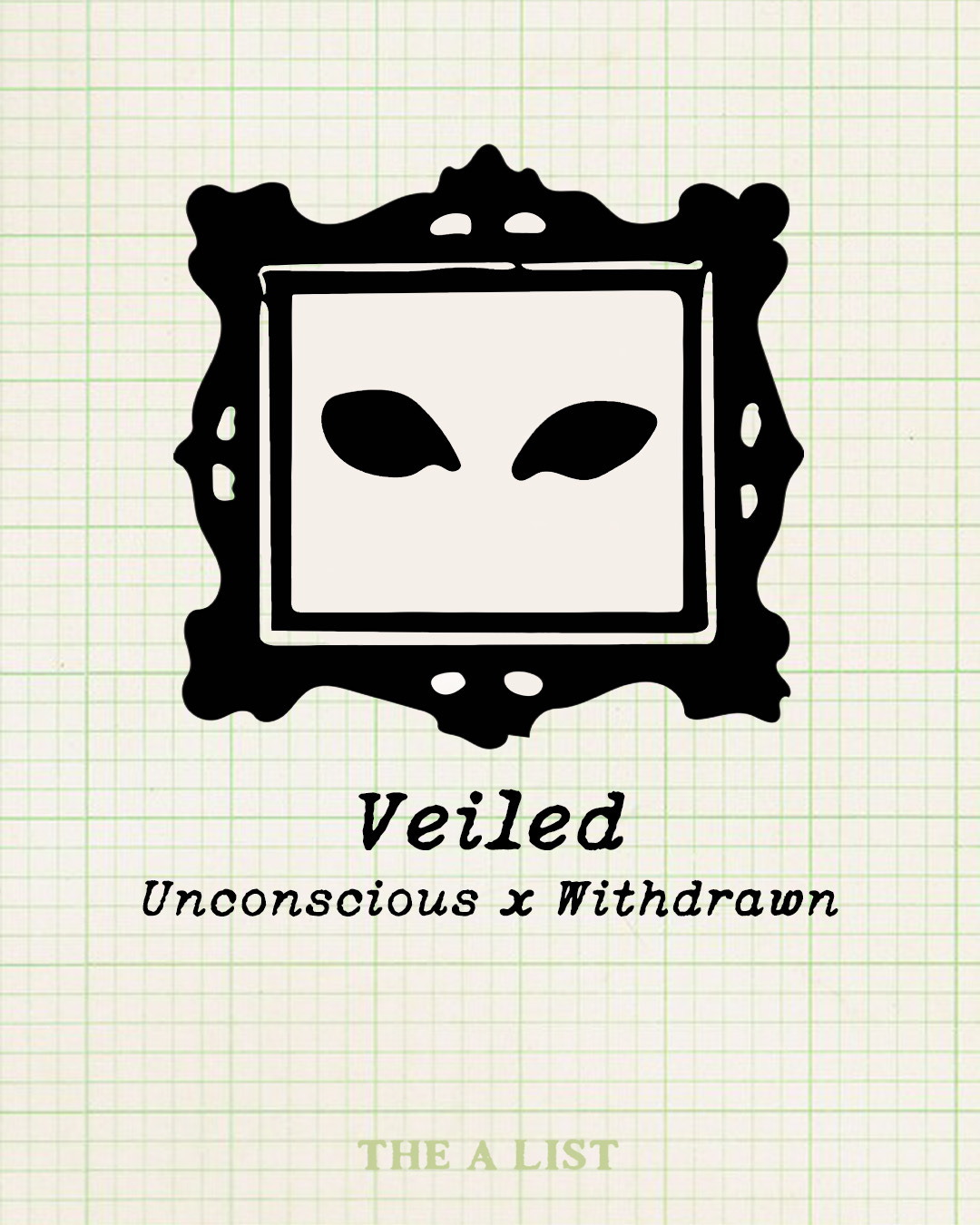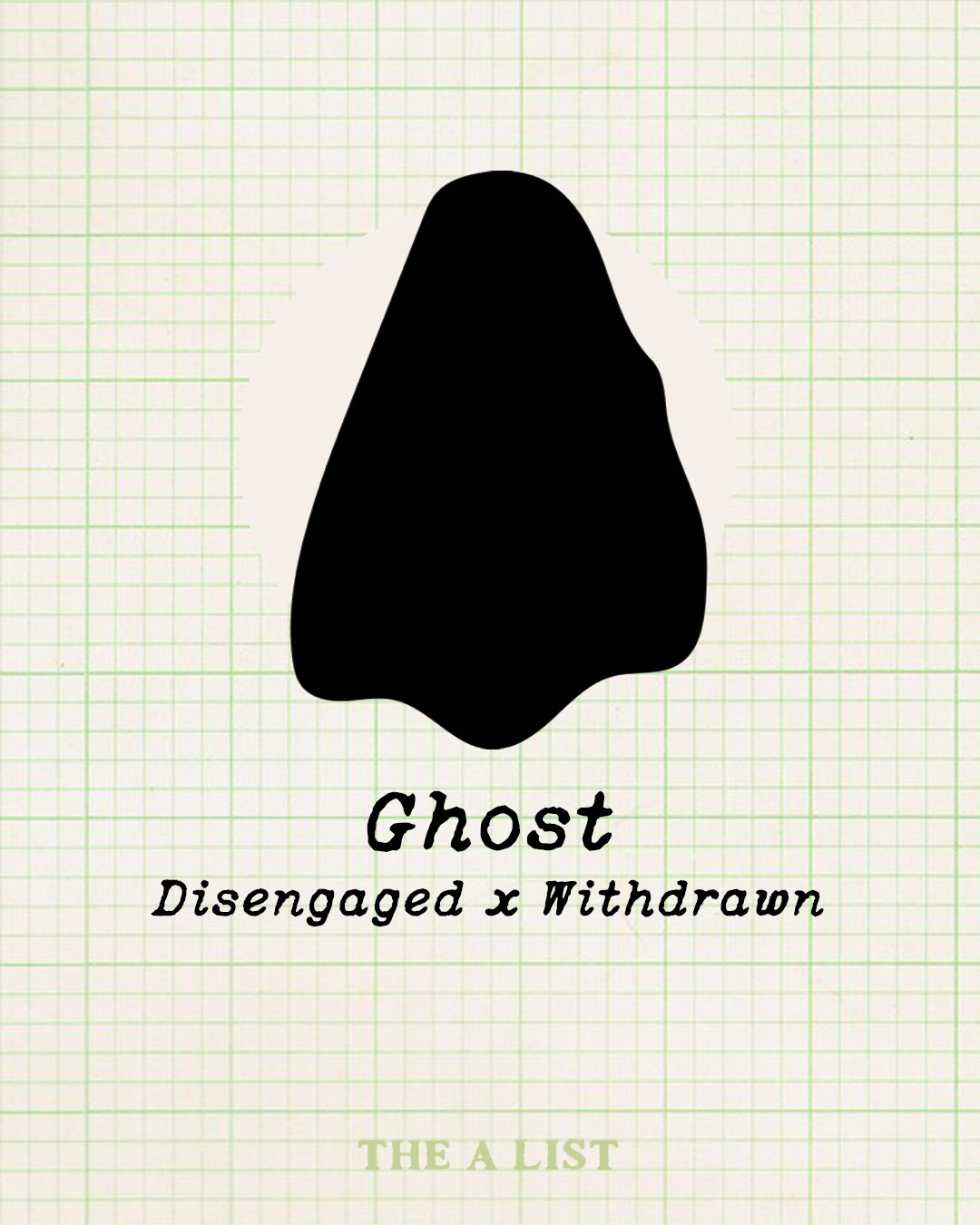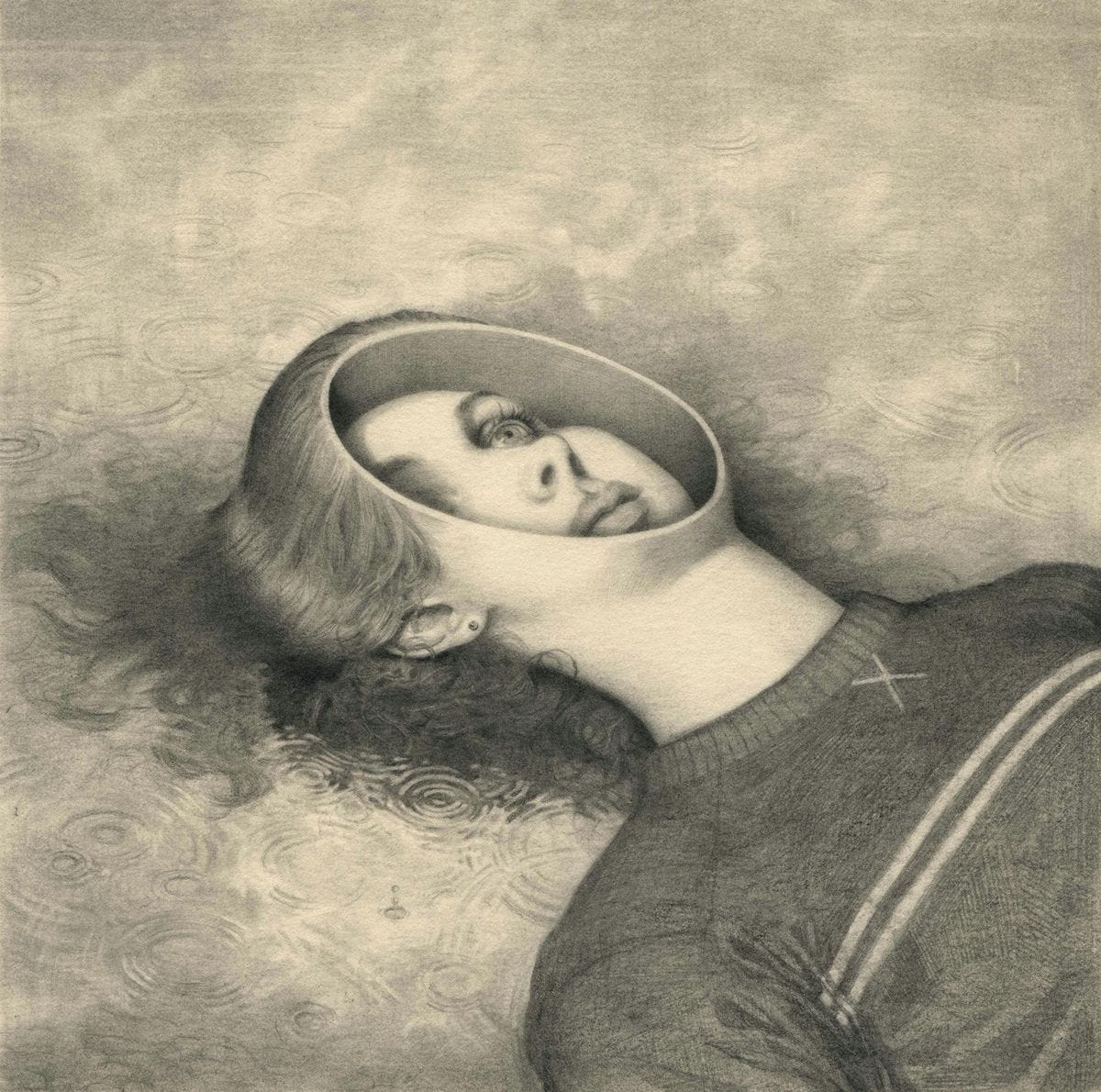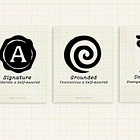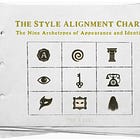The Signature Self is a study of personal style as behavioral evidence. It explores how we present ourselves, and how those presentations reveal the alignment of our inner and outer lives.
There are moments when style no longer feels like a mirror of the self, but a mask, a routine, or an absence.
The choices remain visible, but the person inside them begins to fade.
This is the Withdrawn Row of the Alignment Chart: style that conceals, repeats, or erases the self.
These archetypes, The Masked, The Veiled, and The Ghost, show three ways style withdraws from selfhood. One hides, one conceals, one nearly vanishes. What unites them is not polish or performance, but disconnection.
The Style Alignment Chart: A Conceptual Map
The Style Alignment Chart is a two-axis framework:
Vertical axis: Psychological grounding (from Self-Assured to Withdrawn)
Horizontal axis: Relationship to style (from Deliberate to Disengaged)
Each archetype is positioned where these two forces intersect: intention and identity, presentation and perception.
Today, we will discuss the middle: the Withdrawn Row.
What Withdrawn Means in This System
Withdrawn is not laziness. It is distance.
In psychological terms, it reflects:
Depersonalization and detachment (DSM-5, 2013): a state where one’s self-image feels external, performed, or absent altogether.
Defensive concealment: clothing as a barrier against exposure, a way to control or neutralize visibility.
Low integration, low vitality: style becomes a placeholder, maintaining surface without sustaining inner connection.
Each archetype in this row—The Masked, The Veiled, and The Ghost—illustrates a different mode of withdrawal. One shields, one repeats, one fades. None of them express absence of clothing, but all signal absence of authentic selfhood.
How They Move Horizontally
Across the row, we see a shift in conscious intention:
The Masked withdraws with deliberation.
Their style is curated, precise, but designed to control perception rather than reflect self.
The Veiled withdraws unconsciously.
Their rotation is predictable, mechanical, absent of engagement.
The Ghost withdraws in full disengagement.
Their style signals collapse, detachment, or burnout, an appearance that mirrors absence.
This is where we see the Feedback Loop of Identity in action: experiments invite reactions, reactions reward repetition, repetition slips into default, reinforcing neutrality or nudging you toward assurance or withdrawal.
✦ The Masked
“I dress to preform.”
Distinguishing Traits:
Highly curated, but derivative: looks are borrowed, likely copy and pasted, from cultural cues, not craeted or guided by an internal compass
Precision without authorship: the outfit is flawless, but rarely personal. Master chameleons
Performative presence: visibility used to secure control, not self-expression. The core aim is to shield vulnerability through external mastery, clothing is the mask.
✦ The Veiled
“I dress without awareness”
Distinguishing Traits:
Mechanical dressing: clothes worn by rote, without thought or renewal
Absence of emotional connection: no shame, no pride, just function
Predictable repetition: same rotation for years without reflection. The coore aim is to minimize the psychic demand by erasing engagement with style, making oneself smaller in order to detract attention
✦ The Ghost
“I dress to disappear”
Distinguishing Traits:
Emotional and physical disengagement: clothing signals absence, not presence
Signs of collapse: mismatched, neglected, or visibly detached from vitality
Dissociative undertones: appearance feels like a shell, not a reflection. There is no core aim Style is no longer a medium, only something that must be completed. This is often a signal of emotional breakdown, or severe disengagement.
In Closing
The Withdrawn Row is not apathy. It is estrangement.
Here, clothing no longer reconciles inner and outer life. It hides, it repeats, or it dissolves until identity feels suspended from view. Those who live in this row are not unreachable, but their appearance has ceased to act as bridge. It has become a barrier, a veil, or a ghost of what once was. This is the end of the chart’s descent. Where self-expression fades, and the question becomes not how you look, but whether you appear at all.
Go out, be brave, be bold, and don't be afraid of being ugly or silly or strange!
The world needs to to experiment and play, to try new things and find new pieces you love. Never forget that personal style is experimentation, a method of finding out more of who we are. You have the magnificent, unique ability to express your inner world in a way that no one else ever could.
Your style is not a performance.
It is a self-fulfilling prophecy.
With great personal aesthetic,
Alexandra Diana, The A List
The Alignment Appendix
Bibliography:
Deci, E. L., & Ryan, R. M. (1985). Self-Determination Theory and the Facilitation of Intrinsic Motivation, Social Development, and Well-Being.
McAdams, D. P. (1993). The Stories We Live By: Personal Myths and the Making of the Self.
Goffman, E. (1959). The Presentation of Self in Everyday Life.
Adam Galinsky et al. (2012). Enclothed Cognition. Journal of Experimental Social Psychology.
